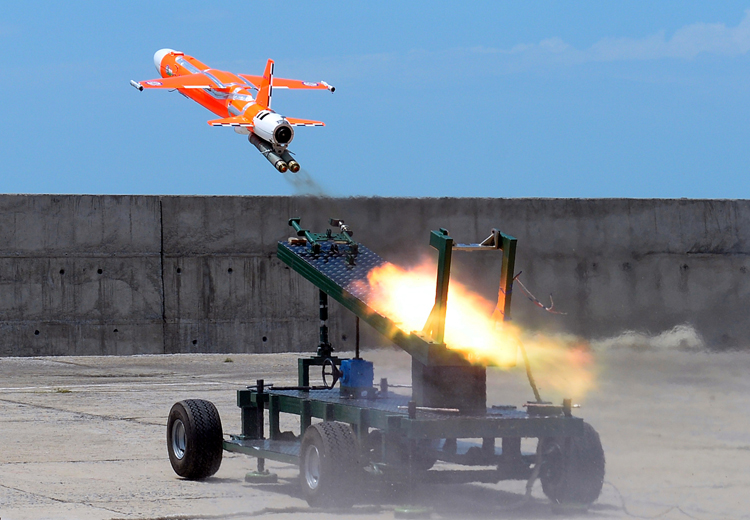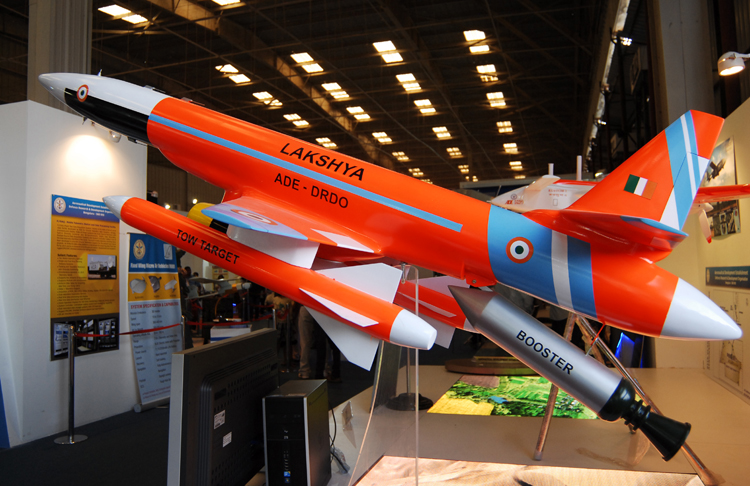INDIAN ARMED FORCES CHIEFS ON
OUR RELENTLESS AND FOCUSED PUBLISHING EFFORTS

SP Guide Publications puts forth a well compiled articulation of issues, pursuits and accomplishments of the Indian Army, over the years

I am confident that SP Guide Publications would continue to inform, inspire and influence.

My compliments to SP Guide Publications for informative and credible reportage on contemporary aerospace issues over the past six decades.
High-speed Expendable Aerial Target
On June 29, 2022, the DRDO successfully tested an indigenously-designed High-speed Expendable Aerial Target (HEAT) named ‘Abhyas’ from the Integrated Test Range (ITR). Programmed for a completely autonomous flight, Abhyas can be launched by the military anywhere using a laptop.
 |
The Author is Former Director General of Information Systems and A Special Forces Veteran, Indian Army |

The Defence Research and Development Organisation (DRDO) has been engaged in development of Pilotless Target Aircraft (PTA) for the past several years. In the early 1970s, DRDO developed the ‘Fluffy’ for the military, which could only be launched up to a little over 9,100 metres and had a maximum endurance of five minutes. So the project was discontinued.
Following the requirement for a PTA projected by the Armed Forces in 1976, DRDO’s Aeronautical Development Establishment (ADE) undertook feasibility studies. An Inter Services Qualitative Requirement (ISQR) was formulated by a Working Group constituted by the Ministry of Defence (MoD) in January 1977. Subsequently, development of Inter-Services PTA by ADE was sanctioned by Government in September 1980 at a cost of 170 million ($2.2 million) including a foreign exchange element of 80 million ($1.0 million).
Lakshya, remotely piloted by a ground control station provides realistic towed aerial sub-targets for live fire training. A variant Lakshya-1 is used to perform discreet aerial reconnaissance of battlefield and target acquisition. Lakshya 2 has also been developed.
Between December 1985 and July 1986, four ‘Lakshya’ PTA prototypes powered by Microturbo TRI-60-5 engines were launched for trials. By June 1994, 18 Lakshya PTA prototypes were fabricated by ADE and 43 trials were conducted. Following successful trials, the prototype project was formally closed on June 1994 having expended 218.2 million ($2.9 million).

Lakshya, remotely piloted by a ground control station provides realistic towed aerial sub-targets for live fire training. The drone is ground or ship launched from a zero length launcher and recovery is by a two-stage parachute system developed by ADE (DRDO), for land or sea-based recovery. The drone has a crushable nose cone, which absorbs the impact of landing, minimising damage. The flight path may be controlled or pre-programmed, based upon the type of mission. A variant Lakshya-1 is used to perform discreet aerial reconnaissance of battlefield and target acquisition. Lakshya 2 has also been developed.
Lakshya is a cost effective, re-usable aerial target system that can reach high subsonic levels. DRDO's website claims that this aerial vehicle is powered by a gas turbine engine and can be launched either from land or from a ship. It carries two tow targets, each with a tow length of 1.5 km, possessing radar.
DRDO has also designed and developed ‘Ulka’, the target drone that can reportedly be launched from subsonic or supersonic aircraft using an ejector release unit. Ulka can simulate the speed and altitude characteristics of a variety of aircraft as also false radar signatures.
DRDO has also designed and developed ‘Ulka’, the target drone that can reportedly be launched from subsonic or supersonic aircraft using an ejector release unit. Ulka can reach a maximum altitude of 13,000 metres at speeds ranging from 0.7 to 1.4 Mach. It can simulate the speed and altitude characteristics of a variety of aircraft as also false radar signatures.
On June 29, 2022, the DRDO successfully tested an indigenously-designed High-speed Expendable Aerial Target (HEAT) named ‘Abhyas’ from the Integrated Test Range (ITR) in Chandipur beach, Odisha. Abhyas was launched using twin under-slung boosters, which provide the initial acceleration. A ground-based controller flew the target air vehicle in a pre-designated low-altitude flight path. ITR deployed various tracking sensors (including an electro-optical targeting system and radar) to monitor the target. During this trial, Abhyas also showcased a high subsonic speed trajectory with high endurance in addition to sustained level and high maneuverability.
Developed by the ADE, Abhyas has a length of 2.3 metres, weighs 75-kg, and can be used as a target for different missile systems. It can reach an altitude of more than five km at half the speed of sound, and equipped with a small gas turbine engine can sustain itself during endurance flights at high subsonic speeds. There is speculation that Abhyas can be used for purposes other than just being a target, like a decoy aircraft and other tasks. Programmed for a completely autonomous flight, Abhyas can be launched by the military anywhere using a laptop.
Abhyas features an adjustable simulated radar cross-section (RCS) for live-fire exercises and other drills. The RCS can be increased to 50 times its size in order to let it imitate a fighter jet. It can also be used to imitate a high-speed subsonic missile. It can also be used as an effective jammer platform.
Abhyas features an adjustable simulated radar cross-section (RCS) for live-fire exercises and other drills. The RCS can be increased to 50 times its size in order to let it imitate a fighter jet. It can also be used to imitate a high-speed subsonic missile. Further, it can also be used as an effective jammer platform. Abhyas features sensors, including acoustic missile distance indicators, which allow engineers to collect information during live-fire trials. Abhyas is equipped with a micro-electromechanical systems-based inertial navigation system and also sports a flight control computer for guidance and control. In addition to this, it is also equipped with a radio altimeter for very low-altitude flight and a data link for encrypted communication.
Abhyas is designed to simulate aircraft for air-to-air exercises, as well as endoatmospheric (referring to lower atmosphere- about 100 km above the Earth's surface) surface-to-air interception tests. Abhyas can also carry warheads though in its present form it is not meant for such tasks. However, sources believe that this capability has the potential to be used in the near future based on the requirements of the Services. With its sensors, altitude ceiling and its multifunctional abilities, Abhyas is superior to its predecessors. With the ability to perform multiple roles, it can cause immense damage to the enemy.





